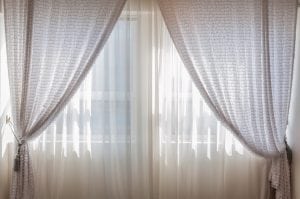Calendar
April 2024 M T W T F S S 1 2 3 4 5 6 7 8 9 10 11 12 13 14 15 16 17 18 19 20 21 22 23 24 25 26 27 28 29 30 -
Recent Posts
Archives
- January 2024
- November 2023
- October 2023
- September 2023
- August 2023
- July 2023
- June 2023
- April 2023
- March 2023
- February 2023
- December 2022
- November 2022
- October 2022
- September 2022
- August 2022
- July 2022
- April 2022
- March 2022
- February 2022
- December 2021
- November 2021
- October 2021
- September 2021
- August 2021
- June 2021
- May 2021
- April 2021
- March 2021
- February 2021
- January 2021
- December 2020
- October 2020
- September 2020
- August 2020
- July 2020
- June 2020
- October 2019
- September 2019
- August 2019
- June 2019
- May 2019
- March 2019
- February 2019
- December 2018
- November 2018
- October 2018
- September 2018
- August 2018
- July 2018
- June 2018
- May 2018
- April 2018
- March 2018
- February 2018
- January 2018
- December 2017
- November 2017
- October 2017
- September 2017
- January 2017
- October 2016
- September 2016
- August 2016
- July 2016
- June 2016
- May 2016
- April 2016
- March 2016
- February 2016
- December 2015
- November 2015
- September 2015
- August 2015
- July 2015
- June 2015
- May 2015
- April 2015
- March 2015
- February 2015
- January 2015
- November 2014
- August 2014
- August 2013
- July 2013
- June 2013
- March 2013
- February 2013
- November 2012
- October 2012
- August 2012
- July 2012
- June 2012
- May 2012
- April 2012
- March 2012
- February 2012
- January 2012
- December 2011
- November 2011
- October 2011
- August 2011
- July 2011
- June 2011
- April 2011
Categories
- Bathroom Cleaning
- Bedroom Cleaning
- Carpet Cleaning
- Cleaning Products
- Cleaning Service
- Cleaning Service Clearwater
- Cleaning Service Tampa
- Cleaning Tips
- Clearwater
- Condominium Cleaning
- Finest European Maids
- Floor Cleaning
- Green cleaning
- Holidays
- Home Cleaning
- Home Organizing
- House Cleaning
- Kitchen
- Living Room
- Maid Service
- Maid Service Tampa
- Moving
- Office Cleaning
- Palm Harbor
- Pinellas County
- Press Release
- Projects
- Residential Cleaning
- Spring Cleaning
- St. Petersburg
- Summer cleaning
- Tile Cleaning
- Tips
- Uncategorized
- Vacation Condominium
- Vacation Rental
- Windows Cleaning
Bedroom Cleaning
How to Easily Clean Your Drapes and Curtains at Home
 How to get rid of dust and stains on the curtains and not to damage delicate matter?
How to get rid of dust and stains on the curtains and not to damage delicate matter?
Here you will find many tips for caring for curtains, curtains and tulle at home.
Tip:
Rinse the blinds thoroughly after hand washing to get rid of excess detergent.
Otherwise, your curtains can quickly fade in the sun.
Key points:
- Cleaning expensive curtains is better to provide professionals
- You can clean the curtains with a vacuum cleaner, using a special nozzle
- Even if your curtains are not afraid of the washing machine, it is better to use the delicate washing mode
Curtains – this is an important element of the interior of your house, carefully selected from thousands of options. But if they are not properly taken care of, they can quickly lose shape and fade. Here are some simple tips for caring for curtains, curtains and gentle tulle.
The most simple and effective way to clean curtains, many experts call elementary airing. On a windy day, open wide a window or a balcony door, leave it for a few hours. If you have heavy, tight curtains, then they can be knocked out like a carpet. Do not do this indoors, as dust will scatter around the room, and you will have to do a wet cleaning.
Dry Cleaning Curtains
Dry-cleaning of curtains can be carried out at home (if, for example, curtains can not be removed) or in a factory. A house specialist will clean the curtains with a steam generator or a hydrocarbon. Such dry cleaning is very delicate and can not cope with serious pollution. In addition, it is not necessary to handle curtains with chemicals, if the house is home to children or older people.
If you are the lucky owner of expensive designer curtains, we recommend that you provide them to the cleaning professionals.
How to clean curtains and curtains at home?
You can clean the curtains yourself with a vacuum cleaner. Use a special nozzle for curtains or upholstery upholstery to avoid damaging the fabric with stiff bristles. If there is no such nozzle in your vacuum cleaner, you can wrap the brush of the vacuum cleaner with a muslin or other thin cloth and fasten it with an elastic band. Do not forget to thoroughly vacuum the inside of the curtains, folds and fringe. Try to clean the blinds every two weeks, because if the dust gets into the fibers of the fabric, it will be much more difficult to get rid of.
Cleaning vinyl blinds is much easier. They should be cleaned once in six months with a sponge dipped in a universal cleaner or in water with vinegar (1/4 cup of vinegar per liter of water).
Do not forget to wipe the dust from the eaves, as well as hooks and rings, on which the curtains are attached. Booms are best cleaned with a cloth dampened in a cleaner or brush with a handle, if they are high.
How to properly wash the curtains?
Most manufacturers recommend for their curtains only dry or chemical cleaning. When washing, curtains can lose shape and shrink more than 10 centimeters. For example, curtains made of artificial silk lose up to 60% of their original strength.
However, some curtains made of non-natural fabrics can be washed in a typewriter in a delicate mode at a temperature of no more than 30 degrees. But if you do not want to risk, it is better to wash them by hand.
Here are some tips for hand washing:
- Thoroughly shake the curtains.
- Rinse them in cold water.
- Soak them in warm water with the addition of a delicate detergent and baking washing soda.
- Rinse several times in cool water and gently squeeze out. If the curtains remain on the curtains, they can burn out in the sun.
- Hang wet curtains on the cornice so that they do not lose shape and are smoothed out under their own weight.
If you decide to stroke the curtains, do not forget to put the iron on the most delicate mode “for synthetics”. If the fabric has a relief – iron without steam. Always iron the curtains while they are still wet.
How to whiten tulle?
There are several ways to return the whiteness of your favorite tulle curtain:
- Soak it for forty minutes in brine, then rinse at least four times.
- Use special bleach for tulle.
Image credit: dadogi
How to get rid of dust and unpleasant odors: Some useful tips
 Knowing the secrets of cleaning and having the right tools will greatly facilitate the cleaning process! Learn how to quickly and easily get rid of dust and unpleasant odors!
Knowing the secrets of cleaning and having the right tools will greatly facilitate the cleaning process! Learn how to quickly and easily get rid of dust and unpleasant odors!
Tip
Get rid of unnecessary things! The more items in your home, the more dirt and dust they save. Perform an annual general cleaning. Throw out all unnecessary and reduce the number of dust collectors for the coming year.
Key points:
The best dusting advice: clean from top to bottom.
After cleaning the dust: vacuum the carpets to clean everything up to the last dust.
Prevent the appearance of dust and unpleasant odors: open the window at least 10 minutes a day to freshen the air in the apartment.
Wiping the dust in the whole house can seem like an immense work. But do not worry – you can still win the battle with dust. Dust consists of particles of dead skin, wool of pets, dust mites and pollen, among other things. So it’s not surprising that, in the absence of wet cleaning, the house will look untidy, and the rooms will have a musty smell. Effective struggle with dust and prevention of its appearance can solve any problems and save you from unpleasant odors, turning your house into a healthy and hypoallergenic home. All that you need to get rid of the house of dust and unpleasant odors are the correct devices and a few useful tips.
How to get rid of dust and unpleasant odors?
- Ideally, these measures need to be taken 1-2 times a week to maintain a healthy, hypoallergenic and to the same fragrant habitat! Always start a wet cleaning from the upper levels – high cabinets and furniture – moving down.
- For shelves and hard surfaces, a damp rag for dust is best. On a wet rag dust clings much better than on a dry one. You can also use a brush of ostrich feathers to remove dust, as the electric charge of feathers clings dust, not spreading it around the room.
- To clean the wallpaper and painted walls, use a rubber sponge. Wiping cloth and gentle cleaning agents.
- Decorative carpets and carpets are best simply vacuumed. It is best to use apparatus with air filters of fine cleaning, which retain even the finest dust. Also vacuum cleaner after wiping the dust to collect the remaining dirt after cleaning.
- Curtains and furniture upholstery can be vacuumed on low traction by putting a special nozzle on the vacuum cleaner.
- Floor coverings without lint should be washed with a mop, and not swept with a dry broom. So you quickly get rid of dust and mustiness and prevent it from coming back soon.
- For hard-to-reach areas or special technical equipment such as a keyboard, use a compressed air cartridge or a blow-off gun to get rid of dust in cracks and furrows.
- Use a scented cleaner to clean the room with a pleasant smell, or add a few drops of your favorite essential oil, such as lemon or tea tree, onto a damp cloth that you wipe the dust off.
How to prevent the accumulation of dust and odors?
Frequent wet cleaning can easily cope with the problem areas of the apartment, but there are many ways that will help avoid the early return of dust and unpleasant odors.
- Ventilate as often as possible. Clean air is important not only to prevent the appearance of dust, but also to eliminate bad smells. In cold weather, open the window for 10 minutes to run into the apartment a portion of fresh air.
- Think about the use of an air purifying system. For their effectiveness to be noticeable, such systems must be installed in each room.
- Change the filters in your ventilation, air conditioning or heating system, as they can accumulate dust, which they then distribute to your apartment.
- When cooking or using the bathroom, use the extractor to remove steam and odors from the room.
- For deep cleaning, regularly wash carpets with shampoo or seek the help of specialists to clean their steam professionally and avoid the accumulation of unpleasant odors.
- Once a week, spray curtains and upholstered furniture with a cloth freshener. To get rid of dust, wash removable covers in the washing machine or ask for dry cleaning at least once a year.
- Upholstery and carpets are the most active dust collectors, so give preference to leather furniture, as well as hard flooring instead of carpets and blinds instead of curtains.
- If possible, change bed linen once a week. To reduce the risk of dust mites, use a hypoallergenic mattress cover.
Regularly take out the garbage, without waiting until the trash can is filled to the top.
Image credit: qimono
Making Sense of “Bedroom Hygiene”
 Cleaning your bedroom (thoroughly) the right way is a chore that is often overlooked and avoided.
Cleaning your bedroom (thoroughly) the right way is a chore that is often overlooked and avoided.
Unfortunately, not properly cleaning your bedroom, specifically in the areas of your bed, pillows, and sheets can cause unwanted dirt, negative skin reactions, bacteria, and even illnesses. Below are a few outlined steps to more effectively cleaning your bedroom, as well as details explaining how often each should be done and on what timely basis.
Cleaning Your Bed
Most people look past this chore, or procrastinate and often this behavior leads to unwanted acne, breakouts, and even ticks, fleas, and dust mites. Cleaning your bed, including sheets, pillow cases, and even the mattress itself is essential to preventing unwanted germs and hosts of other illnesses.
An uncleaned mattress also collects dust and allergens, in turn setting off allergies that you may not have even knew you had!
Realistically, you should change and clean your sheets weekly, and be sanitizing and changing (flipping) your mattress every month if possible. You need to remove all items first, before attempting to clean your mattress, but it’s as simple as sprinkling baking soda, using a light cleaner with a sponge, and then airing your mattress out, outside to collect UV rays from the sun to both dry your mattress and kill unwanted germs and other bacteria.
Vacuuming in and around your bed
If possible, it’s recommended that you lightly vacuum your mattress, as well as areas around your bed on a monthly basis. This is important, since often you cannot see dusts, allergens, dirt, and other skin oils with your bare eyes that are both unhealthy for your body and poor for your sleeping conditions.
Before ‘getting down and dirty’ with your bed, linens, and the surrounding areas it’s especially important to make sure you clear all objects on, in, and around your bed so that you do not miss any dust or pollen, and so that dirt does not spread or cling onto other objects during the cleaning process!
Cleaning your Linens the Right Way
If you are not cleaning your sheets, pillow covers, and even your pillows themselves the right ways, you could be missing germs and unwanted dust and dirt.
Each fabric for the corresponding bed linens should have their own directions somewhere on a label directing you as to what type of washer and dryer settings you should use to clean them, such as temperature for example, and what will be the safest method so that you do not destroy your linens in the process.
Image credit: Wong Wai Kit





